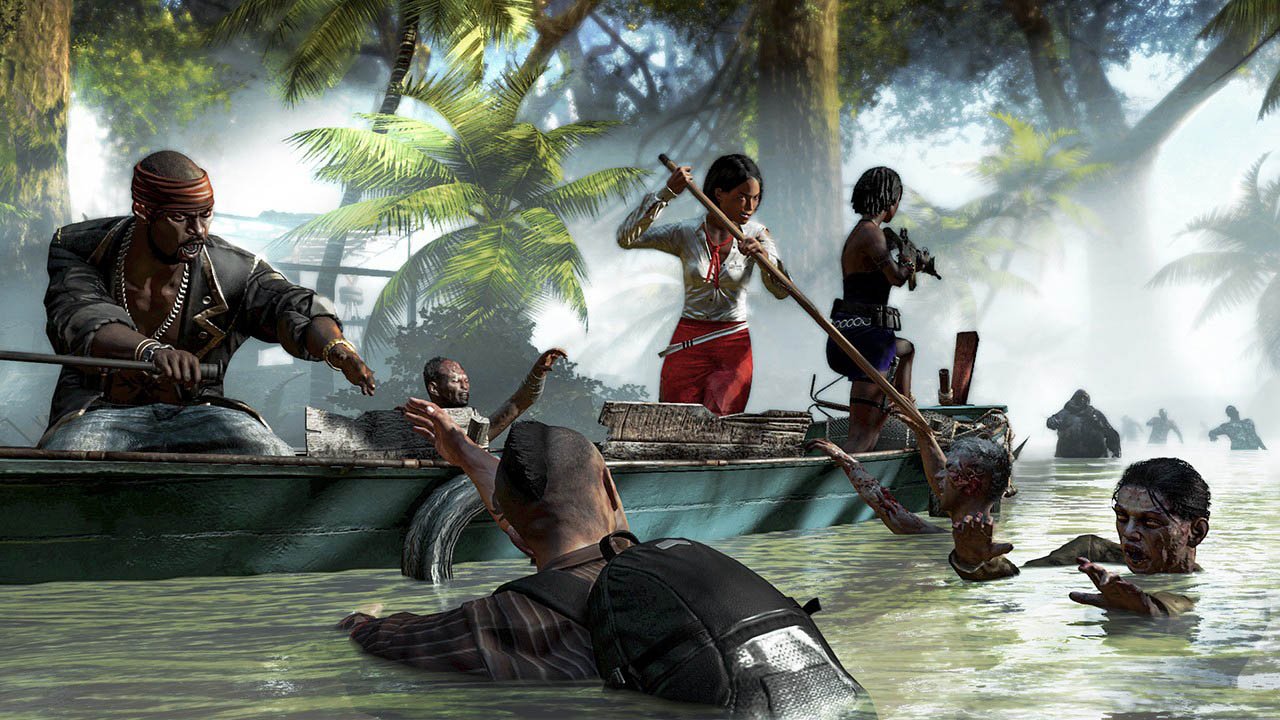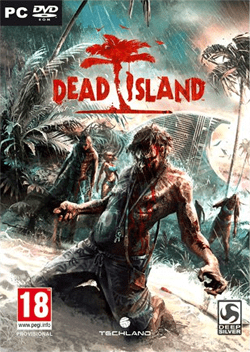Only people who know what to expect from a resort vacation should ever book one. That kind of trip isn’t likely to furnish much cultural value, but easy access to overindulgence can still make it worthwhile for the right audience. Fittingly, Dead Island, an action RPG hybrid set on the fictional resort island of Banoi, is much like its setting: full of simple pleasures that appeal to the instinctual senses — but not so much to the mind.
After a brief intro cinematic you’re able to choose from one of four characters — essentially “class types” that determine your starting affinities. There’s Sam B, a “blunt weapons expert” and N’awlins rapper fading fast from the success of his one chart-topping single; Xian Mei, a specialist in sharp weapons who has just found herself exiled from the Hong Kong police force; Purna, a similarly-disenfranchised Koori-Australian firearms expert formerly of the Sydney police force; and, lastly, Logan, the overwhelmingly unsympathetic former NFL star who advocates drunken street-racing and is good at throwing weapons.
Despite these overwrought character backstories, Dead Island’s narrative is never good enough to invest any significant interest in. The game opens with the characters awakening in their hotel rooms, happening upon some decaying menace in the hallways, discovering that they’re immune to infection — and then just sort of continues on from there, providing exposition only when absolutely necessary to shunt the player into a new locale. While this would be fine in most cases, the game’s decision to take on a “serious” tone makes its narrative more noticeable — and therefore worthy of criticism — than it would otherwise be if left further in the background. Two particularly contrived, “emotional” moments (at the end of Act I and IV) could very well cause someone to roll their eyes straight out of their head. If Dead Island had decided to take itself less seriously — trading intentionally in B-movie camp rather than abrupt instances of melodrama — it would have been much more successful.
It doesn’t quite matter so much once the game finds its legs, though. Aside from a dismal plot, the minute-by-minute play of Dead Island is exciting enough to invest the player in a smaller sort of narrative. The open world (divided into four aesthetically varied main locations) of Banoi is filled with survivors who need assistance, and undertaking these missions allows for enough distraction that a instinctual narrative — survive! — takes precedence. This is entirely thanks to a visceral (and ultimately satisfying) combat and levelling system that works to make every battle — from a mano-a-mano dust up with a single zombie to a frantic encounter with an entire horde — rewarding in its own right. Techland, Dead Island’s developer, clearly spent time honing its combat system and it pays off. Players are able to attack with melee weapons of all sorts (from wrenches and baseball bats to meat cleavers and sledgehammers) as well as firearms, depending on preference. Each weapon can be modified through the game’s plentiful workbenches and either found lying around the island or purchased from (strangely capitalist) fellow survivors. Although the buying, selling and looting aspect of the game is a large part of it, Dead Island also hosts a central levelling mechanic that sees experience being rewarded for completing quests and taking down enemies. Picking and choosing where to allocate skill points across three equally appealing trees makes it worthwhile to fully explore Banoi — and, of course, take down every monstrous opponent possible.
The zombies themselves are handled well, Dead Island cannily offering up variations of the undead that range from slow, dim-witted types to fast, 28 Days Later-style threats that run alarmingly quickly. All of them are deadly en masse and this creates a nice sense of pacing for every encounter. The player never feels so powerful that they can’t be unnerved by a growing horde because situations (and health bars) can take a nasty turn on a dime. A variety of enemy types combined with a fantastic combat system results in a great core to the game — so much so that it’s not uncommon (after getting a grip on the fighting mechanics and a few good weapons in your inventory) to run toward a threat rather than away from it. This, I think, speaks well to the central foundation upon which the rest of the game has been built.
Technical issues obscure the soundly built heart of Dead Island’s experience though. While the game’s visuals are frequently great (the opening act’s sandy beaches beautifully evoke warm sunshine and salty breezes while rundown cities possess a believable feeling of pre-infection overpopulation and decay) Dead Island’s facial models are atrocious. Every character is afflicted with lizard eyes in cutscenes — Xian Mei in particular — that further exasperate already bad dialogue by forcing all attention to these wildly roving pupils (it’s like the cast of the game can’t believe the story they’re in either!). The accompaniment of some hard-to-ignore bugs add to this issue. Stuttering frame rates and audio glitches often rear their ugly heads when the game is at its most intense. Instances like speeding a jeep through beach-side umbrellas and recliners or desperately fighting out from within a group of zombies can force the engine to its knees and otherwise routine moments can be afflicted with unexplainable glitches (the final cutscene in my playthrough was marred by a discoloured block of ghost textures that took up the entire top half of the television screen).
Co-op play does something to make up for these shortcomings, but not quite enough to completely forgive. Solo play, while fun in its own right, pales in comparison to getting a few people together to handle quests as a group. The chaos that can ensue as everyone scrambles to reach objectives (or simply take on a horde with pipes, knives and pistols) provides a welcome counterpart to the quieter experience of going the campaign alone. The lack of a split-screen, local co-op mode detracts from this, though. The fun that could be had from taking down zombies side-by-side with a friend — or giving expository cutscenes their proper MST3K treatment — would’ve gone a long way toward increasing the game’s appeal. That this kind of thing is only possible online takes away from what could have been a major selling point.
Dead Island isn’t going to set the industry on fire (like its stunning teaser trailer may have inspired hopes for) but it is, by no means, a poor game. Players looking for another addition to the sub-genre of loot-grabbing, stats-centred action RPGs, tired of replaying Diablo and Borderlands, will find much to love here despite the presence of some unfortunate flaws. Just like its resort vacation setting, Dead Island will hold appeal to an audience in the mood for simple fare — but not for those who want to get something more for their money and free time.






